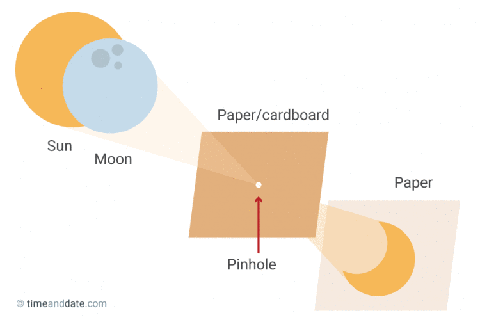
We caught up with a rather excited Mr Payne to talk about one of his favourite things that might just be taking place tomorrow. Here's what he told us.
You can hardly have escaped the news that there will be a partial eclipse of the sun during Friday's PSHE lesson that will reach its maximum at about 9:30 am.
There a a few things needed for a total eclipse to be witnessed.
1) a planet bearing complex life capable of witnessing the event
2) a moon around that planet of the right size and at the right distance
3) the correct alignment to cast a shadow that crosses the land masses of that planet.
None of these are particularly probable.
Our galaxy, the Milky way, contains roughly 100,000,000,000 stars. Of those only 1 in 5 contain an Earth-like planet.
In order to sustain ANY sort of life those Earth-like planets need to be in the "Goldilocks Zone", so their distance from the star makes it neither "too hot" nor "too cold" but "just right".
So far, it seems inevitable there will be other life in the galaxy capable of seeing a solar eclipse on their planet. Wrong.
Consider the following list of requirements sustain complex life in the form we know it..... liquid water near surface; right mass of star with long enough lifetime for life to evolve and not too much ultraviolet; stable planetary orbits; right planet mass to maintain atmosphere and ocean with a solid molten core and enough heat for plate tectonics; a Jupiter-like neighbour to clear out comets and asteroids that would otherwise bombard the planet; plate tectonics to build up land mass, enhance bio-diversity, and enable a magnetic field to protect from lethal solar radiation; not too much, nor too little ocean so there is the correct balance of land and water; a large moon at the right distance to stabilize tilt; a small Mars-like neighbour as possible source to seed Earth-like planet; maintenance of adequate temperature, composition and pressure for plants and animals; a galaxy with enough heavy elements, not too small, elliptical or irregular; right position the galaxy; few giant impacts like 65 million years ago; enough carbon for life, but not enough for runaway greenhouse effect; evolution of oxygen and photosythesis; and, of course, biological evolution.
With all this considered it has been calculated that there are likely to be ONLY 4 or 5 planets in our ENTIRE galaxy that can support complex life like ours. It would seem we are pretty unique in our galaxy.
2) THEN consider that, in order to see a total eclipse a planet must have a moon that is exactly the right size and at exactly the right distance to completely block our the light from the star. Our moon may be 400 times smaller than our sun, but it also happens to be 400 times nearer. Our moon happens to have been created that particular size and at that particular location when a Mars sized planet crashed into earth throwing up debris that gathered together to form the moon. Nice.
3) Finally, not only does the moon need to be between the Earth and the Sun (OK, this happens once every 28 days) but it also needs to be at a point where it crosses our orbital plane so its shadow falls onto Earth.
To sum it up, it is possible that we may be the ONLY lifeforms IN THE GALAXY privileged enough to get the chance to witness total eclipses and this will be many of our students' first ever opportunity to see one so close to its totality.
However they should not be viewed with the naked eye as even though doing so can damage your retina, it has no pain receptors to tell you you are doing so. So here is a link to a simple way that students can use paper and card and work in pairs for a few minutes to see a projection of the eclipse.
http://www.timeanddate.com/eclipse/make-pinhole-projector.html
Of course...... it will probably overcast and a huge let down but I like to think this message will not have been wasted if even a few people realise just how awesome the Universe and our place in it is!
PS There are in fact ANOTHER 100,000,000,000 galaxies in the universe EACH with 100,000,000,000 stars so there WILL be other lifeforms watching solar eclipses somewhere in the universe but I couldn't find their email addresses and I'm not sure they use Twitter, and Facebook
Thank you,
Mr Payne
(Look out for pictures of some of our students trying to catch a glimpse tomorrow – weather permitting.)
